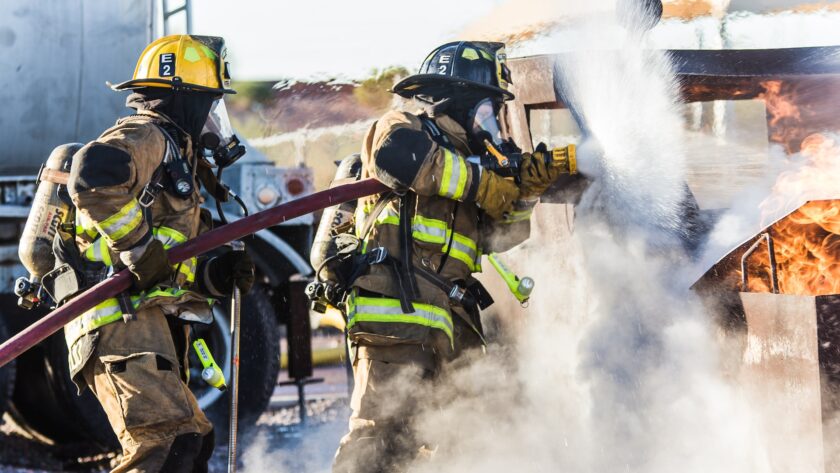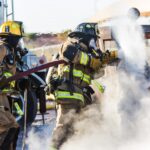Firefighters are responsible for a lot of things at once. Prioritizing your tasks and taking care of the most important ones is crucial for safety. If you want to enter the fire service, these skills will help you stand out and make the most of your time.
Extinguishment
Extinguishment is when water is used to cool fire-causing materials so that the temperature decreases enough for them to burn no longer. It is one of the most common and effective firefighting techniques, but it also requires a great deal of knowledge about applying the appropriate amount of water, in the right place, at the right time. Often, a firefighter’s job depends on being a first observer at the scene of a fire, so they need to know how to take an initial look and identify essential elements like heat sources. This will help them provide valuable information to fire investigators arriving later. A wide variety of firefighting jargon is often department- or region-specific.
Fog Nozzle
Firefighting professionals like Daniel Ahasic LinkedIn must understand the nozzles in their fleet and how to use them effectively. Fog nozzles spray a stream of water aimed at specific areas within a burning room. The fog absorbs the heat of the fire and then transforms into steam displacing oxygen and extinguishing the flames. Fog spray is often used with indirect fire attack techniques, such as gas cooling. However, this technique is only sometimes the most effective method for fighting fires in confined spaces and may need to be more effective at wind-driven fires. As a result, fire departments have been forced to adapt and change their nozzle arsenals as new technology becomes available.
Indirect Attack
One of the most crucial decisions firefighting crews make is when to shift from direct attack to indirect attack. Indirect attacks involve applying suppression tactics that take place away from the burning edge of the fire. When the intensity of a fire is high, firefighters need to use indirect attack methods. This method minimizes risk and prevents the fire from spreading. This technique uses a series of short bursts of water directed at the flames. This spray suffocates the fire and reduces the production of steam.
Thermal Imaging
Thermal imaging is an invaluable tool for firefighters. It can help them accurately size up a fire, track the growth of the fire, and find victims, other first responders, and egress routes. It can also help them monitor a fire from the air, even in low light or smoke conditions. This can save valuable time in the initial stages of a firefighting operation. In addition, firefighters can use thermal imaging for search and rescue, such as identifying road accident victims thrown from their vehicles at night. In a recent study, firefighters using thermal imaging reduced their search time by 75 percent.
Water Blasting
Water blasting is an industrial cleaning process using ultra-high-pressure water directed at a surface through a specialized nozzle. This is done to remove rust, chemicals, paints, and other buildups without harming the surrounding surfaces. Besides being an excellent method for removing coatings and residues, it’s also an eco-friendly and economical way to clean various surfaces without harsh chemicals. However, direct water spraying on fires can also cause severe burns and push the hot gases into other rooms where they could start another fire. This is why water-based firefighting techniques have been banned in many areas worldwide.
Direct Attack
Direct attack is the application of water onto a fire to suffocate it. It’s one of the most well-known techniques for fighting fires. It’s also a very effective technique for suppressing high-rise fires. During a fire, the first decision is how to make an initial attack. This depends on the intensity level and whether any improvements can be built to slow the spread of the fire. The next step is to select an anchor point for the attack. It should be an easy and safe place to build a line to prevent the fire from spreading further.
Combination Attack
The combination attack is a special move that allows two or more units to attack each other. The episode is a great way to deal with high-energy fires and can be used by all departments involved. This attack also requires a team of firefighters to perform it properly, so it is essential to learn how to use it correctly. This technique is necessary for any firefighter, especially when fighting high-rise buildings. It will help ensure your safety is not jeopardized, and everyone can live safely in these structures.
Tactical Ventilation
Tactical ventilation is a technique firefighters use to control the fire’s internal environment. It is a powerful tool to help prevent smoke, heat, and flammable gas from spreading throughout the building. Firefighters must understand how ventilation affects the fire. Specifically, they need to know how ventilation controls the fire’s oxygen intake and how it changes its behavior. A fire’s air intake is more important to its development and spread than its output. When a fire is ventilation-controlled, restricting the inflow of air through a door or opening slows the increase in HRR and limits the fire to the growth stage until it’s extinguished. In addition, this strategy reduces the hazard downstream from the barrier by reducing the number of hot gases leaving the compartment.




